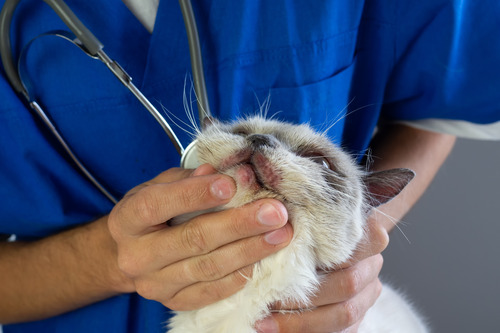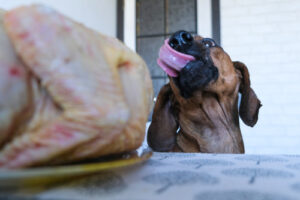For many cat owners, watching a beloved pet suffer from allergic reactions can be distressing. One common yet often overlooked cause is cat food allergies, which can lead to dermatitis—an inflammatory skin condition. At Chino Valley Animal Hospital, we’ve seen firsthand how identifying and addressing these allergies can significantly improve your cat’s health and quality of life. This blog will explore what cat food allergies are, their symptoms, and how they are diagnosed and managed. If you suspect your cat might be suffering from this condition, please call us at (928) 636-4382 or request an appointment online.
What Are Cat Food Allergies?
Cat food allergies occur when a cat’s immune system mistakenly identifies a protein or another ingredient in their food as a threat. This misidentification triggers an immune response that can lead to various symptoms, primarily skin-related such as dermatitis. Unlike food intolerance, which affects the digestive system, food allergies involve an immune response.
Common Allergens in Cat Food
While any food ingredient can potentially trigger an allergic reaction, some are more likely than others. Proteins, especially from dairy products, beef, chicken, and fish, are the most common allergens. Grains like wheat and corn also sometimes trigger allergies.
Symptoms of Dermatitis in Cats
The primary symptom of dermatitis caused by food allergies in cats is itchy skin. This itching can lead to excessive scratching, which may cause hair loss, redness, and secondary skin infections. Common areas affected include the head, neck, paws, and the base of the tail.
Secondary Symptoms
In addition to skin issues, some cats may exhibit gastrointestinal symptoms such as vomiting or diarrhea, although these are less common. Chronic ear problems can also be a sign of food allergies in some felines.
Diagnosing Cat Food Allergies
The Elimination Diet
The most effective way to diagnose a food allergy in cats is through an elimination diet. This involves feeding the cat a simplified diet of foods that they have never eaten before. If symptoms improve, potential allergens are reintroduced one at a time to identify the culprit.
Importance of Veterinary Guidance
Given that food allergies overlap with other conditions, it’s important to conduct this process under veterinary supervision to ensure it’s done correctly and safely.
Managing Dermatitis From Food Allergies
Switching Foods
Once an allergen is identified, managing your cat’s allergies involves avoiding the trigger foods. This might mean switching to a hypoallergenic or limited ingredient diet. Our team at Chino Valley Animal Hospital can help you select the right food for your cat.
Ongoing Care
Managing a cat’s food allergies is a continuous process that may involve periodic adjustments to their diet and monitoring for new allergies. Regular check-ups are essential to maintain your cat’s skin health and overall well-being.
Improving Your Cat’s Quality of Life
Understanding and managing cat food allergies can seem overwhelming, but with the right knowledge and support, you can greatly improve your cat’s life. If you’re concerned about allergies affecting your cat’s health, contact Chino Valley Animal Hospital at (928) 636-4382 or request an appointment online. Together, we can ensure your cat enjoys a happy, healthy life free from allergy-related discomfort.




